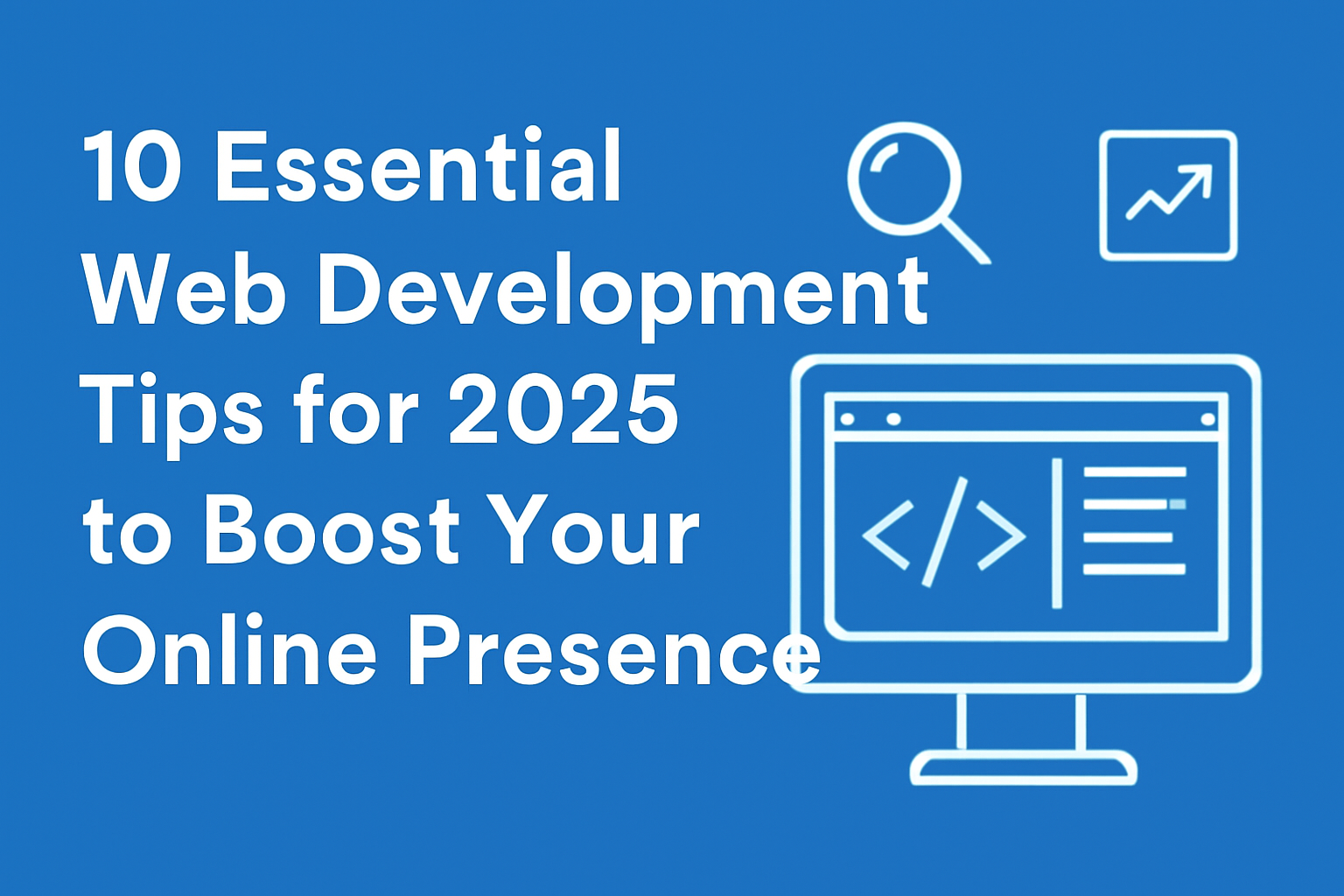10 Essential Web Development Tips for 2025 to Boost Your Online Presence
In 2025, having a well-optimized, user-friendly website is more important than ever. Whether you’re a startup, a small business, or an established brand, your online presence can make or break your success. Here are the top 10 web development tips that will help you stay ahead of the curve and drive more traffic to your website.
1. Embrace Responsive Design
Responsive web design ensures your website looks great on all devices, from desktops to smartphones. With Google’s mobile-first indexing, a mobile-friendly website is crucial for SEO rankings. Use flexible layouts and scalable images to ensure your site adjusts to any screen size seamlessly.
SEO Tip: Google prioritizes mobile-friendly websites in search rankings. Ensure your website passes Google’s Mobile-Friendly Test to avoid ranking penalties.
2. Optimize Website Speed
Website speed is a major ranking factor for SEO. A slow-loading website can frustrate users and drive them away, resulting in higher bounce rates. Compress images, minify CSS and JavaScript, and use a content delivery network (CDN) to improve load times.
SEO Tip: Tools like Google PageSpeed Insights or GTMetrix can help analyze your website speed and offer suggestions for improvement.
3. Prioritize User Experience (UX/UI)
A great user experience (UX) and intuitive user interface (UI) design are vital for keeping visitors engaged. A clean, easy-to-navigate website encourages visitors to explore your content longer, boosting engagement metrics.
SEO Tip: Good UX/UI can reduce bounce rates, which directly impacts your website’s SEO ranking. Focus on fast loading, easy navigation, and clear calls to action.
4. Implement Strong SEO Best Practices
SEO is the backbone of online visibility. Use relevant keywords throughout your content, optimize meta tags (title, description), use alt tags for images, and ensure proper header hierarchy (H1, H2, H3).
SEO Tip: Regularly update your content to keep it relevant. Adding fresh, keyword-rich content can boost your SEO rankings and keep you ahead of competitors.
5. Leverage Backlinks for SEO Authority
Backlinks remain one of the most important factors for SEO. Quality backlinks from authoritative websites signal to search engines that your website is trustworthy and valuable.
SEO Tip: Guest blogging, influencer collaborations, and content marketing are great ways to earn backlinks. Always focus on getting backlinks from high-authority domains in your industry.
6. Focus on Content Quality and Relevance
Content is king! High-quality, relevant content not only helps with SEO but also keeps your audience engaged. Whether it’s blog posts, videos, or case studies, make sure your content is informative, well-written, and answers your audience’s queries.
SEO Tip: Use LSI (Latent Semantic Indexing) keywords to help Google understand the context of your content. Tools like SEMrush and Ahrefs can help you identify relevant keywords.
7. Optimize for Voice Search
With the rise of virtual assistants like Siri, Alexa, and Google Assistant, voice search is becoming increasingly popular. Optimize your website content for voice queries, which are typically longer and more conversational.
SEO Tip: Focus on long-tail keywords and natural language in your content to optimize for voice search.
8. Integrate Schema Markup
Schema markup helps search engines understand your website’s content in greater detail, which can result in rich snippets. These enhanced search results can increase click-through rates and drive more traffic.
SEO Tip: Implement structured data for products, reviews, events, and blog posts. Google’s Structured Data Markup Helper can assist in adding schema to your site.
9. Use Internal Linking to Boost SEO
Internal linking is a powerful way to enhance your website’s SEO. Linking relevant pages and blog posts within your content helps search engines understand your website structure, and it encourages visitors to explore more pages.
SEO Tip: Always link to your most important pages and blog posts. Use keyword-rich anchor text for these links.
10. Regularly Monitor and Analyze Website Performance
Using tools like Google Analytics and Google Search Console allows you to track your website’s performance. Regularly monitor user behavior, bounce rates, traffic sources, and other key metrics to identify areas for improvement.
SEO Tip: Set up conversion tracking to measure how well your website turns visitors into customers or leads.
Conclusion
By implementing these 10 web development tips, you’ll be able to create a high-performing, user-friendly website that’s optimized for SEO. Staying up-to-date with the latest trends and best practices will help you stay competitive in an ever-evolving digital landscape. Start applying these tips today to see an increase in traffic, engagement, and conversions!

